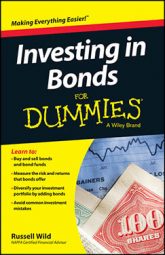Suppose you've decided that you want a 50/50 portfolio: 50 percent stocks and 50 percent bonds. Suppose, in addition, that you have both a taxable brokerage account and a conventional IRA. You've decided to put all your bonds in the IRA and all your stocks in your taxable brokerage account. Do you really have a 50/50 portfolio?
No, probably not. The IRA bond money, whenever you decide to tap it, will incur income tax. The stocks will be taxable as capital gains — in most cases, 15 or 20 percent — only to the extent that they've grown in value.
In other words, $100,000 taken from the stock portfolio in your brokerage account, assuming you originally invested $50,000, will incur a tax of ($50,000 capital gain x 15 to 20 percent) $7,500 – $10,000. But $100,000 taken from the bond portfolio in your IRA may incur a tax (assuming you are in the 28 percent tax bracket) of $28,000.
As you can see, your IRA portfolio is worth considerably less (in this case, about 22 percent less) than the same amount of money in your taxable account.
If you are more than five years from tapping your nest egg, don't concern yourself too much with this discrepancy. You don't yet know what your income tax rate or the capital gains rate will be when you start to withdraw from your savings. Nor can you predict very well the appreciation you'll enjoy in your various accounts. But as you approach retirement, or if you are already in the disbursement phase of your investor life, it makes sense to factor this tax differential into your portfolio allocation.
In the example above, a true, after-tax, 50/50 portfolio would need to have more bonds than stocks. If, however, your bonds were in a tax-free Roth IRA rather than in a tax-deferred account, the opposite becomes true, because generally no tax is due on withdrawals from the Roth.

